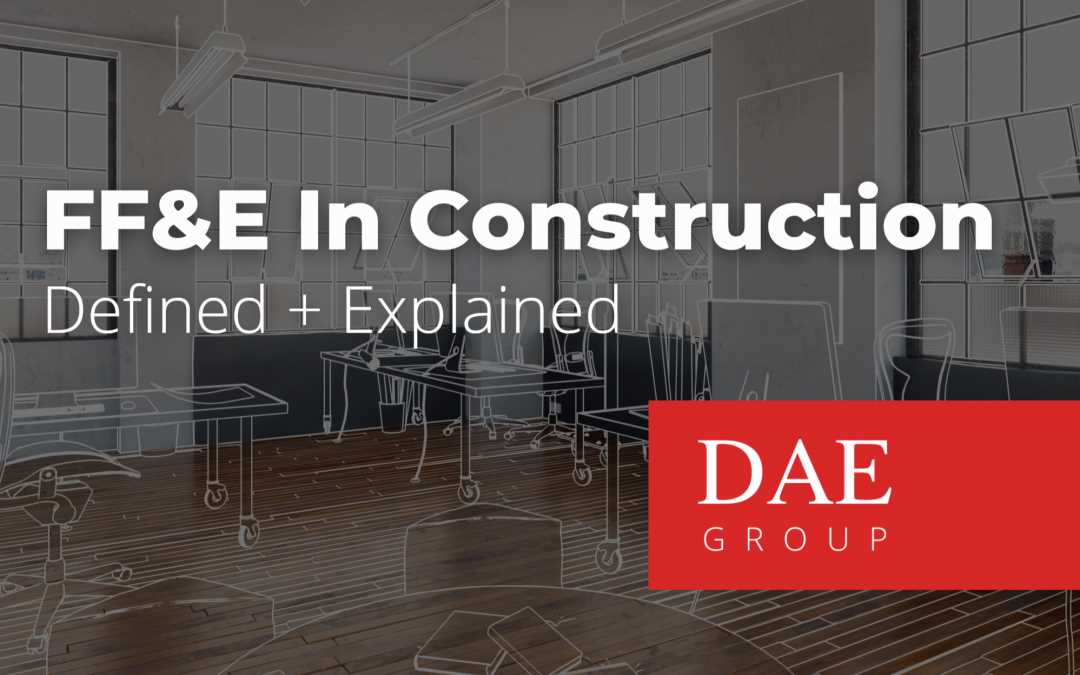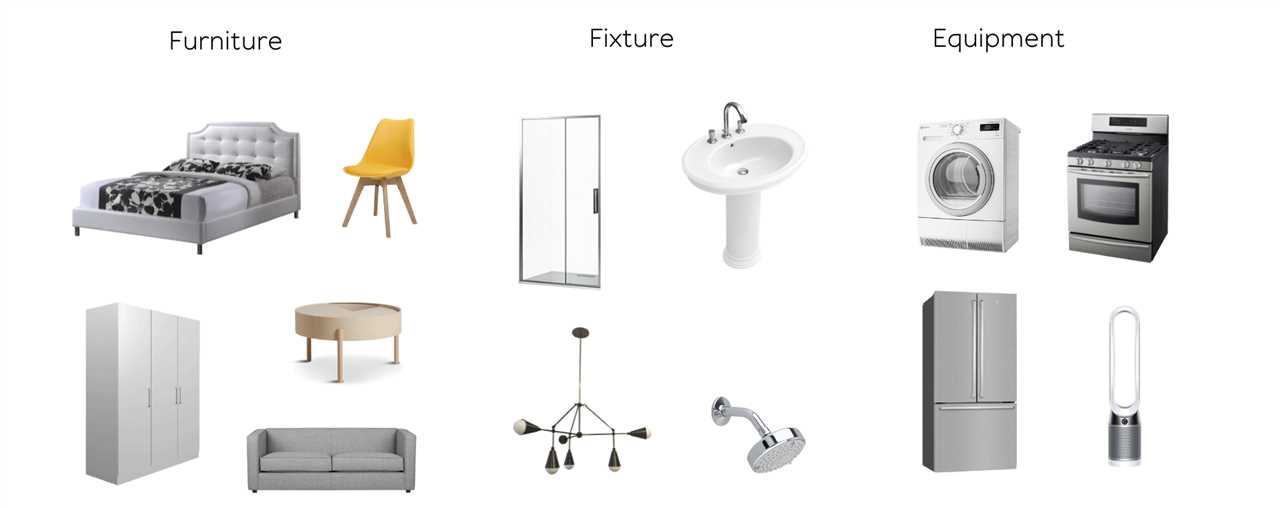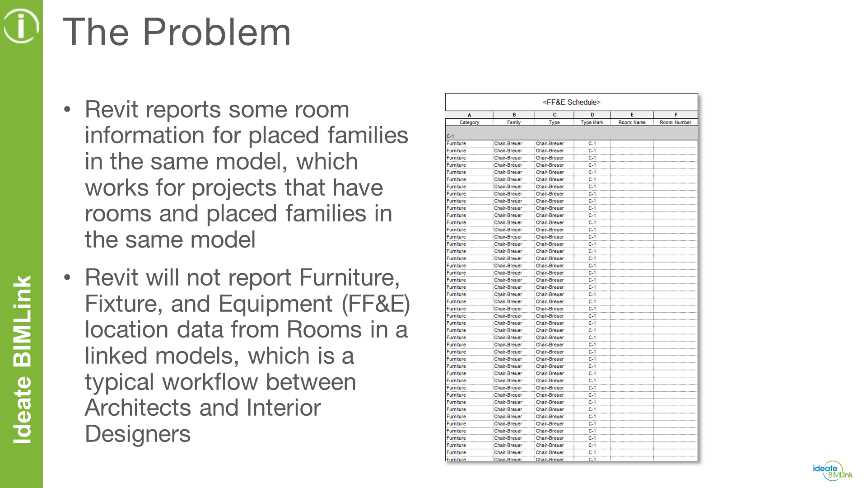The Importance of FF&E in Interior Design
Furniture, Fixtures, and Equipment (FF&E) play a crucial role in interior design. They are not just decorative elements but also essential components that contribute to the overall functionality and aesthetic appeal of a space.
Enhancing the Aesthetic Appeal
One of the primary reasons why FF&E is important in interior design is its ability to enhance the aesthetic appeal of a space. Well-chosen furniture, fixtures, and equipment can transform a plain and ordinary room into a visually stunning and inviting environment. Whether it’s a luxurious sofa, a stylish lighting fixture, or a unique piece of artwork, FF&E adds character and personality to the space.
Creating a Functional Space

FF&E is not just about looks; it also plays a crucial role in creating a functional space. Each piece of furniture, fixture, or equipment is carefully selected to serve a specific purpose and to meet the needs of the people using the space. From comfortable seating options to ergonomic workstations, FF&E ensures that the space is practical and efficient.
Moreover, FF&E helps in optimizing the layout and flow of the space. By strategically placing furniture and fixtures, interior designers can create designated areas for different activities, such as dining, working, or relaxing, ensuring that the space is organized and easy to navigate.
Reflecting the Brand Identity
FF&E also plays a crucial role in reflecting the brand identity of a business or establishment. Whether it’s a hotel, restaurant, or office space, the choice of furniture, fixtures, and equipment can convey the brand’s values, style, and overall image. For example, a modern and minimalist office space with sleek furniture and high-tech equipment reflects a forward-thinking and innovative brand, while a cozy and rustic restaurant with wooden furniture and warm lighting creates a welcoming and intimate atmosphere.
By carefully selecting FF&E that aligns with the brand’s identity, interior designers can create a cohesive and memorable experience for customers and visitors.
Improving Comfort and Ergonomics

Comfort and ergonomics are essential considerations in interior design, and FF&E plays a significant role in ensuring a comfortable and ergonomic space. From ergonomic chairs that provide proper support to adjustable lighting fixtures that minimize eye strain, FF&E helps in creating a space that is comfortable and conducive to productivity and well-being.
Enhancing the Overall Experience
Lastly, FF&E enhances the overall experience of the space. Whether it’s a hotel room, a restaurant, or an office, the choice of furniture, fixtures, and equipment can greatly impact the experience of the people using the space. Comfortable seating, well-designed workstations, and aesthetically pleasing decor contribute to a positive and enjoyable experience for customers, guests, and employees.
The Importance of Enhancing the Aesthetic Appeal in Interior Design
FF&E elements such as furniture, lighting fixtures, artwork, and decorative accessories can significantly contribute to the visual appeal of a space. They can add personality, style, and character to any interior design project. By carefully selecting and placing these elements, interior designers can create a visually pleasing environment that captures the attention and interest of the occupants.
One of the key aspects of enhancing the aesthetic appeal is creating a cohesive and harmonious design. This involves considering factors such as color schemes, textures, patterns, and proportions. By carefully selecting FF&E elements that complement each other and the overall design concept, interior designers can create a visually balanced and appealing space.
In addition to creating a visually pleasing environment, enhancing the aesthetic appeal can also have a positive impact on the mood and emotions of the occupants. A well-designed space that is visually appealing can evoke positive feelings such as joy, relaxation, and inspiration. This can greatly enhance the overall experience of the space and create a memorable impression.
Furthermore, enhancing the aesthetic appeal can also contribute to the branding and identity of a space. By incorporating elements that reflect the brand’s values, personality, and style, interior designers can create a unique and memorable environment that aligns with the brand’s image. This can help create a strong and cohesive brand identity that resonates with the target audience.
The Importance of Creating a Functional Space
Optimizing Space Utilization
One of the key aspects of creating a functional space is optimizing space utilization. This involves carefully planning the layout and arrangement of furniture, fixtures, and equipment (FF&E) to ensure efficient use of the available space. By maximizing the use of space, you can create a more organized and clutter-free environment.
For example, in an office setting, proper space utilization can lead to improved productivity and workflow. By strategically placing workstations, storage units, and other FF&E, you can create a layout that promotes collaboration, minimizes distractions, and enhances overall efficiency.
Considering User Needs
For instance, in a residential setting, the functional design of a kitchen would involve considering factors such as storage space, countertop area, and ease of movement. By incorporating these elements into the design, you can create a kitchen that is not only visually appealing but also practical and user-friendly.
Ensuring Safety and Accessibility
Functionality also encompasses safety and accessibility. A well-designed space should prioritize the safety of its occupants and provide easy access to all areas. This is particularly important in commercial establishments and public spaces where there may be specific regulations and guidelines to follow.
By incorporating features such as proper lighting, clear signage, and ergonomic furniture, you can create a space that is safe and accessible for everyone. This not only enhances the overall user experience but also ensures compliance with relevant regulations.
The Importance of Reflecting the Brand Identity
1. Consistency
By incorporating FF&E that reflects the brand identity, businesses can establish a consistent visual language throughout their space. Whether it’s a modern and sleek design for a tech company or a cozy and rustic atmosphere for a café, the FF&E choices can reinforce the brand’s message and create a memorable experience for visitors.
2. Brand Recognition

Using FF&E that reflects the brand identity can also help with brand recognition. When customers or clients enter a space that is consistent with the brand’s image, they can easily identify and connect with the brand. This can lead to increased brand loyalty and customer engagement.
For example, a luxury hotel that incorporates elegant and high-end FF&E will leave a lasting impression on guests, reinforcing the brand’s reputation for luxury and sophistication.
Overall, reflecting the brand identity through FF&E is an essential component of interior design. It helps create a cohesive and consistent experience, enhances brand recognition, and leaves a lasting impression on customers and clients. By carefully selecting FF&E that aligns with the brand’s image and values, businesses can create a space that truly represents their identity.
Improving Comfort and Ergonomics
Comfort is essential in any setting, whether it’s a home, office, or commercial establishment. By carefully selecting and incorporating the right FF&E, you can create a space that promotes relaxation and well-being. Comfortable seating options, such as plush sofas or ergonomic chairs, can make a significant difference in how people feel while spending time in a room.
Ergonomics is another crucial aspect of interior design that focuses on creating a space that is efficient and user-friendly. By considering the human body’s natural movements and needs, FF&E can be designed to provide optimal support and functionality. For example, adjustable desks and chairs can be used to accommodate individuals of different heights and promote proper posture.
Benefits of Improving Comfort and Ergonomics
Enhancing comfort and ergonomics in interior design offers several benefits:
- Improved Productivity: A comfortable and ergonomic space can help individuals focus better and work more efficiently.
- Reduced Health Issues: By providing proper support and promoting good posture, FF&E can help prevent musculoskeletal problems and other health issues.
- Enhanced Well-being: A comfortable and ergonomic environment can contribute to a sense of well-being and improve overall quality of life.
- Positive Brand Image: By prioritizing comfort and ergonomics, businesses can create a positive impression on clients and customers, enhancing their brand image.
Overall, improving comfort and ergonomics through the selection and placement of FF&E is essential for creating a space that is not only visually appealing but also functional and conducive to the well-being of its occupants.
Enhancing the Overall Experience
By carefully selecting and placing the right FF&E, interior designers can enhance the overall experience of the space, making it more enjoyable and inviting for both customers and employees.
Creating a Welcoming Atmosphere
The right choice of furniture and fixtures can create a welcoming atmosphere in any space. Whether it’s a restaurant, a hotel lobby, or an office reception area, the FF&E can set the tone and make a lasting impression on visitors.
From comfortable seating options to stylish lighting fixtures, every element contributes to the overall ambiance. By creating a warm and inviting atmosphere, businesses can leave a positive impression on their customers, making them feel comfortable and valued.
Promoting Productivity and Efficiency
Efficiency and productivity are essential in any workspace. The right FF&E can contribute to creating an environment that promotes focus, collaboration, and creativity.
For example, ergonomic chairs and adjustable desks can improve comfort and reduce the risk of musculoskeletal disorders, allowing employees to work more efficiently. Proper lighting and acoustics can also play a significant role in creating a conducive work environment.
| Benefits of Enhancing the Overall Experience with FF&E: |
|---|
| 1. Creates a welcoming atmosphere |
| 2. Leaves a positive impression on customers |
| 3. Promotes productivity and efficiency |
| 4. Improves comfort and reduces the risk of health issues |
| 5. Enhances the overall aesthetic appeal |
Overall, enhancing the overall experience with the right FF&E is essential for creating a space that not only looks good but also functions effectively. By considering the needs and preferences of the users, interior designers can create a space that is both visually appealing and highly functional.

Emily Bibb simplifies finance through bestselling books and articles, bridging complex concepts for everyday understanding. Engaging audiences via social media, she shares insights for financial success. Active in seminars and philanthropy, Bibb aims to create a more financially informed society, driven by her passion for empowering others.
